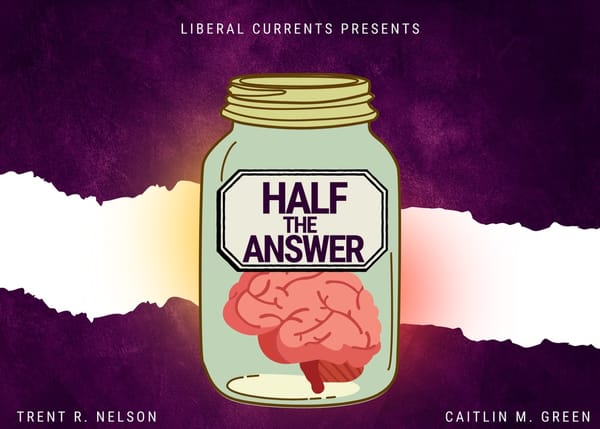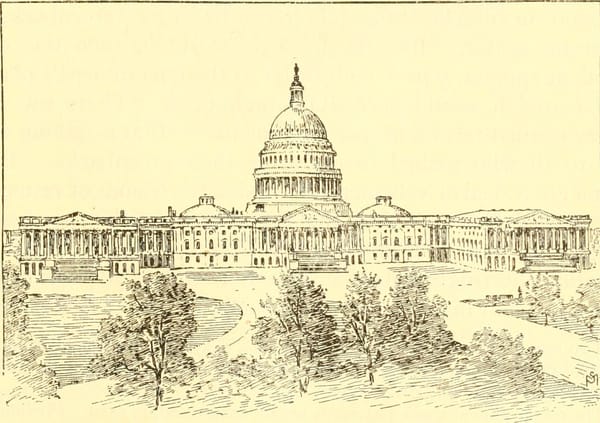The Road to Citizens United, Revisited: A Review of 'We the Corporations'

In the 2010 Supreme Court case Citizens United v. FEC, the Court went out of its way to rule on matters never actually brought up in the original brief, making it a landmark case instead of a rather plain and incremental one based on precedent. Yet the decision was far from surprising given the long history—some might say the relentless march—of corporations fighting for and winning more and more Constitutional rights. Citizens United, as it turns out, was the cherry on top of a long, seemingly teleological movement toward greater and more clearly defined rights for corporations.
This is not to say that there weren’t gaps in this history in which the courts were hostile to corporate interests, or that the expansion of corporate rights was inevitable from the beginning—only that Citizens United represented a significant step for corporations in which the relationship between the average citizen and the corporation was thrown into sharp relief. Citizens and the predictable ruling in Hobby Lobby shortly after don’t ease the worries of those who think corporations have become dangerously powerful in the 21st century and a potential threat to the democratic way of life.
But it wasn’t always this way. As Adam Winkler points out in We the Corporations, corporations “have pursued a long-standing, strategic effort to establish and expand their Constitutional protections” since the beginning. Their ability to find and fund the best lawyers along with an urge to increase profits and minimize regulation made them, quite literally, “Constitutional first movers” in every sense of the term (xiii). They haven’t just “piggybacked on the rights already held by individuals” (xiii). But in addition to being “first movers,” corporations were also great “Constitutional leveragers … [exploiting] constitutional reforms originally designed for progressive causes, transforming them to serve the ends of capital” (xiii). In essence, corporations have been on both sides of it, bravely hacking their way through unexplored Constitutional terrain as well as widening the Constitutional path traversed previously by individuals.
The fundamental question at the heart of Winkler’s study is this: “Is a corporation, as Blackstone said, a legal person with rights of its own? Or is a corporation … best understood to be an association of people whose rights are derived from its members?” (70). This philosophical question has, unlike many philosophical questions, very real consequences, and the courts have at different times answered in the affirmative one way or the other, wavered on the question, and avoided answering the question altogether. At other times, they simply seemed to have answered “yes” to the question of “which one?” as if it were a coherent and satisfactory answer. t’s easy to take shots at the decisions, indecisions, and wavering of the courts: but that would be to misunderstand the murky nature of corporations and the questions that follow. Blackstone argued that corporations had three core rights: the ability to own property, make contracts, and a right to access the courts. But he also said, tellingly, that they were both public and private entities: while corporate bylaws were binding, they could be modified if “contrary to the law of the land.” As Winkler points out, this is in contrast to our modern view where we think of corporations as pretty much purely private entities.
Dartmouth College v. Woodward (1819) put an end to this uneasy tension between public and private, holding that a state legislature couldn’t change or dissolve a corporation’s charter. Chief Justice Marshall concurred with Daniel Webster—the lead attorney arguing on behalf of his alma mater and defendant in the case, Dartmouth—and broke with Blackstone’s view: although a corporation was not a person with all the rights of physical, warm-blooded persons, they were largely private, market-based entities created by and held accountable to the rights laid out in the corporation’s original charter; no longer were they the sole creatures of government and amenable to the public good. Thomas Jefferson, interestingly enough, responded:
the idea that institutions established for the use of the nation, cannot be touched nor modified, even to make them answer their end, because of rights gratuitously supposed in those employed to manage them in trust for the public, may perhaps be a salutary provision against the abuses of a monarch, but is most absurd against the nation itself.
The court, also at Webster’s insistence, denied corporate personhood. Of course, this had a double-edge to it. Because corporations were not persons, the court had to “pierce the veil” and consider the corporation’s members, its trustees, its stockholders to make a decision. Corporate personhood—whatever its critics and advocates argue today—was advanced by both anti-business populists for the purpose of limiting corporate rights as well as by pro-business corporationalists for the purpose of securing for corporations the same rights as individual citizens.
As the decisions in Dartmouth and Bank of the U.S. v Deveaux (1809)—allowing corporations to appear in federal court, a right that was thought to be limited to citizens—settled in, Justice Taney swept the courts with a populist backlash against corporations, seeking to reverse the reach of these two decisions. “The Taney Court narrowed, refocused, and finally rejected [the] rule that, for access to federal court, the citizenship of a corporation was defined by the citizenship of its members,” and instead ruled that it was the state in which the corporation, as a legal entity, resided (103). Taney also suggested, Winkler writes, that “stockholders should not be able to take advantage of [corporate] personhood to shield their assets, only to turn around and argue for piercing the corporate veil when it came to corporate rights.” This logic would echo through the years, finding itself awkwardly nestled next to rulings like Hobby Lobby (2014) in which business owners were afforded the benefit of corporate piercing so as to deny their employees certain healthcare benefits based on religious reasoning, but were then able to pull the corporate veil back over themselves if, say, someone were to slip and break their arm on company property and sue.
After the Civil War, things went yet another direction. Justice Stephen Field, in a series of decisions and oversteps, finally ruled in Minneapolis St. Louis Railway Co. v. Beckwith (1889) “that corporations are persons within the meaning of the clause in question.” The clause, or more accurately the clauses in question are of course, the “equal protection of the laws” and deprivation of property clauses of the Fourteenth Amendment. In other words, Field, who had capitalized on a previous but erroneous headnote from a different case, had just ruled that corporations were persons protected under the Fourteenth Amendment. Although the court at the end of 19th century still believed in “minimal or necessary restrictions on business activity,” it’s difficult to overstate the precedent this ruling and this era set for the rights of businesses and corporations in the upcoming 20th century—especially considering the fact that many courts around this time were already showing a bias toward laissez-faire, free market thinking in most of its corporate case rulings. Beyond this, we need only look to the fact that, as Winkler points out, a mere 28 of the 604 Fourteenth Amendment cases brought before the courts dealt with “the group whose plight motivated the adoption of the amendment”: African-Americans. “[A]nd in nearly all of those cases the racial minorities lost.”
The beginning of the 20th century kicked off what historians called the Progressive Era and in terms of the judiciary the Lochner Era. It was also the trust-building and trust-busting era, as well as the pro-business era—this era pelts the reader with such a tangle of disparate and sometimes conflicting strands that it can be difficult to see what actually came of the period between the 1890s and the 1930s. One of the main things to come out of it, for our purposes, was the court’s ruling that that corporations had property rights but not liberty rights like freedom of association. Spurred by the Progressive era urge to regulate the trusts and hold businesses criminally accountable, the courts were forced once again to address “questions about the scope of corporate rights under the Constitution.” But alas, the court never offered a “thoughtful justification of the distinction” between property and liberty rights nor bothered to “define the respective terms.”
Progressive reforms brought corporations and businesses before the courts to once again be “first movers”—this time with regard to the Fourth and Fifth Amendments. Hale v. Henkel (1906) decided that corporation didn’t have a Fifth Amendment right against self-incrimination but did have Fourth Amendment claim against unreasonable searches and seizures. To be sure, a corporation’s right to not be unreasonably searched was less extensive than that which applied to actual people. The definition of “reasonable” is a much lower bar for corporations.
Two of the most interesting cases that came before the courts materialized in 1916 and 1919. In the first—more accurately a series of cases referred to as the Brewers Cases—the Michigan Supreme Court held that “corporations have no right to influence elections” and upheld a ban on corporate money-flow to campaigns. The other, Dodge Brothers v. Ford Motor Company (1919), held that, at the end of the day, “business corporations must be run in the interests of stockholders.” Corporate law scholar Kent Greenfield refers to the ruling in Dodge “corporate law’s original sin” (248). Although some scholars argue that the ruling isn’t as consequential—or detrimental to the public good—as some make out to be, it nonetheless “has become deeply ingrained in America’s corporate culture” as a general, guiding principle if not a legally binding statute. In fact the reason it is both a shocking and somewhat dull ruling is that, as Jonathan Macey points out, “the rule of wealth maximization for shareholders is virtually impossible to enforce as a practical matter.” Generally speaking, “As long as corporate directors and CEOs claim to be maximizing profits for shareholders, they will be taken at their word, because it is impossible to refute these corporate officials’ self-serving assertions about their motives.” In other words, the ruling has had more cultural consequences than legal ones.
In the mid-20th century, as the court decided corporations do indeed have press and speech rights, the fuzzy line previous courts drew between property and liberty rights was tossed out. As Winkler says, Justice Harlan Stone’s famous footnote number four in United States v. Carolene Products “marks the end of the Lochner era, when the court devoted itself mainly to protecting economic and property rights, and the beginning of the Brown era, when the court’s primary role became protecting civil rights and civil liberties” (232). The famous footnote claimed that the courts should work to protect “discrete and insular minorities” who are the usual targets of majority persecution. As Winkler goes on to point out, though, Justice Stone “was not just referring to racial minorities; he also meant political minorities” (232). Or more accurately, any person, group, or entity that was the target of majoritarian impulses, oppression, or unfair treatment.
If our vantage point is the recent Citizens United decision, the mid- to late 20th century is best seen as an essentially pro-business period—perhaps unsurprisingly since free-market principles have ushered in an era of unprecedented wealth and comfort. So Citizens United didn’t just appear out of thin air; the scaffolding to support it was largely in place by the end of the century, much to the chagrin of Jeffersonian populist-minded justices like Louis Brandeis. Hence, the unsurprising nature of the decision given the long view of corporate rights cases.
From the standpoint of judicial activism—a term not just reserved for more liberal decisions—the majority decision in Citizens United reached a new high. Originally only briefed on whether the FEC was wrong to censor a political documentary about Hillary Clinton funded with money from a corporation’s treasury, the conservative band of Alito, Scalia, Thomas, and Kennedy pushed back against Chief Justice Robert’s original narrow ruling. “The court,” this band of right-leaning justices explicitly stated, “should not focus on the narrow question of whether the Bipartisan Campaign Reform Act applied to this one movie but on the bigger question of whether corporate political expenditures could be limited at all.” “Their draft opinion was a bold corporationalist statement on the expansive rights of corporations that blew well past” anything the lawyers in the case were arguing for. As Winkler observes:
Judicial activism is often just a label given to court rulings someone opposes. In Citizens United, however, the charge was not without justification. The court’s majority had finessed the case so that the justices could decide a major constitutional issue that had not originally been briefed and argued by the parties. The court had also struck down key provisions of a law passed by Congress, and in doing so overturned McConnell, a precedent that was less than seven years old.
What had happened? Little more than a change of Supreme Court personnel could explain this radical shift, if not from the long shadow of the 20th century, from the recent precedents and rulings in the 21st. More on Citizens’ precedent-shattering nature in a moment.
Hobby Lobby—the case that essentially determined that corporations have religious freedom, though failed to explicitly rule on the Free Exercise clause—flows more or less naturally from the history. “The Supreme Court’s decision… was a near perfect embodiment of the more than two-hundred-year history of corporate rights jurisprudence” (380). Another victory for the corporation, we might say dryly.
But the whole point of Winkler’s sweep of the history of corporate rights is to illustrate that ever since this country’s founding, corporations
have fought to win a greater share of the individual rights guaranteed by the Constitution. First they won constitutional protection for the core rights of corporations identified by Blackstone in his Commentaries: rights of property, contract, and access to court. Then they won the rights of due process and equal protection under the Fourteenth Amendment [before both minorities and women, mind you] and the protections of the criminal procedure provisions of the Constitution. In the early twentieth century, the court said that there were nonetheless limits to the constitutional rights of corporations: they had property rights but not liberty rights. Eventually, however, the court broke down that distinction and began to recognize corporations have liberty rights such as freedom of the press and of association.
And the rest, that is, the rest of the 20th century, is history.
For anyone looking for a broad and relatively unbiased sweep of the history of corporate rights in the United States, Winkler’s We the Corporations is a good place to start. Although Winkler doesn’t offer a tantalizing conclusion or any solutions, the history is suggestive—which is all we can ever really ask of history.




